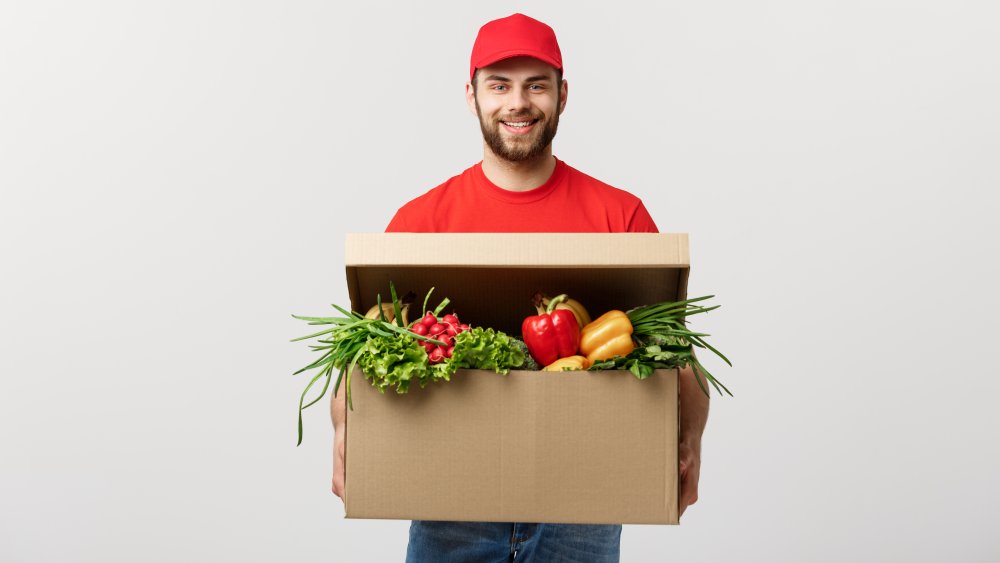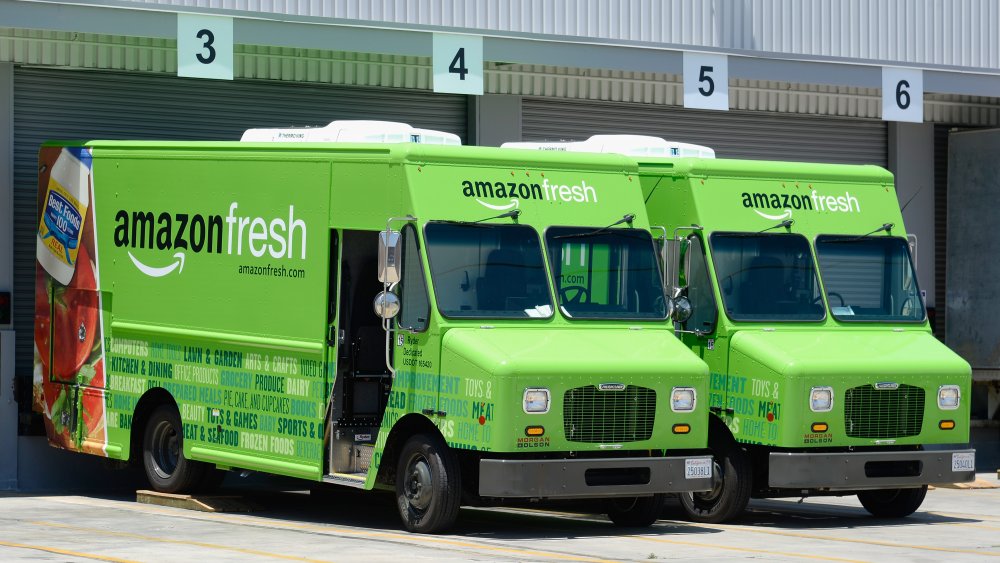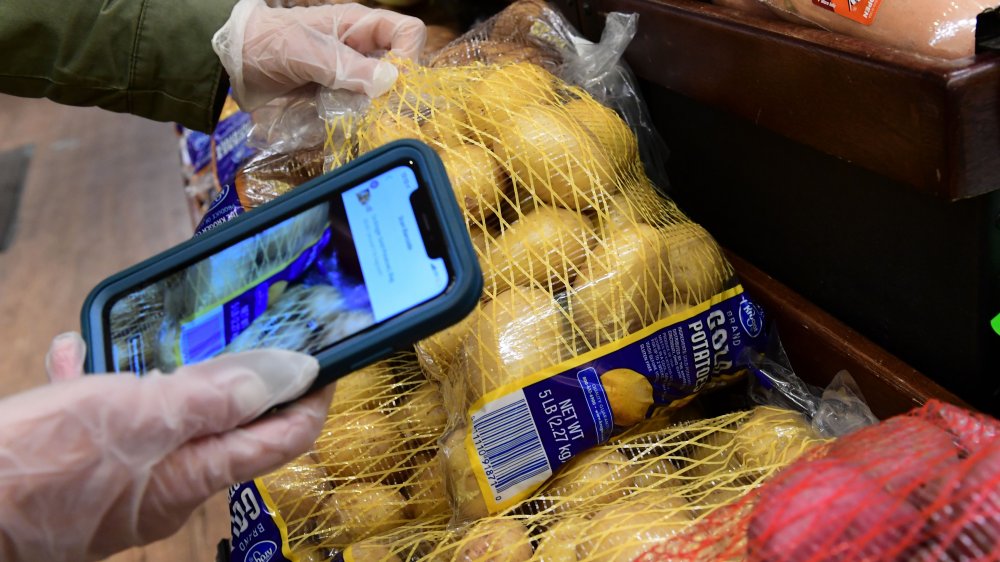The Truth About Grocery Delivery Services
We may receive a commission on purchases made from links.
How much of your time does grocery shopping eat up, do you think? Well, your mileage may vary depending on the size of your family, length of your commute, availability of parking, how often you dine in versus eat out (or takeout), but according to Five Star Home Foods, on average people go to the grocery store 1.6 times a week and spend 43 minutes per trip, which comes out to about 60 hours of shopping per year. And this doesn't count the time you spend driving to and from the store — or even loading the groceries in and out of your car.
Is it any wonder, then, that home grocery delivery services are becoming increasingly popular? Not only do you get to skip pushing a cart around what may be crowded store aisles (a cart whose handle may well contain more germs than your average public restroom toilet seat), but somebody else even carries the grocery bags up to your porch and — if you wish — can carry the groceries inside the house for you.
Who are the main players and how do they stack up?
In many areas of the country, local or regional supermarket chains like Kroger or Safeway offer their own delivery services, and there are also food delivery services like Fresh Direct and Peapod that cover multi-state areas out of their own warehouses. When it comes to nationwide grocery delivery, however, three main players are Instacart, Amazon Fresh, and Walmart.
Instacart probably offers the best selection of the three, since it partners with local grocers, thus allowing you to shop at a variety of stores. Delivery fees start at $3.99, but may be higher depending on delivery time. They offer a monthly subscription for $9.99 ($99 a year) that waives delivery fees, but you're still on the hook for a service fee of 5 percent of each order.
The best overall prices are offered by Walmart, since Business Insider confirms that with Walmart, the price you pay for an item purchased online is the same price you'd pay in-store. Walmart's grocery delivery fee is a flat $9.95, and there's a minimum order of $30.
If you hate paying delivery fees, though, your best bet is Amazon Fresh, since delivery on orders over $50 is absolutely free (though it's $9.99 if you fail to make the minimum). The downside? You have to be an Amazon Prime member to utilize Fresh. The upside? Free delivery (no minimum) on everything else Amazon Prime offers, plus free streaming video, music, and a bunch of other fun perks.
Items may be priced higher than in stores
Walmart guarantees consistent pricing online and in-store, but Business Insider warns that many other grocery delivery services do jack up the prices for goods ordered online. While Instacart claimed to be adopting a policy whereby it would be upfront about any pricing changes back in 2015 (via Vox), a Reddit user still caught them with their hand in the cookie jar some two years later.
This shopper placed an order of groceries for which the total was $123.21 before the delivery fee, service fee, or tip were added in. The thing is, Instacart messed up and left the original store receipt in one of the bags, and this showed that those same items, purchased in-store, cost only $86.87. That's a markup of 42.8 percent. What's more, as regards Instacart's promised disclosure — well, they did admit to markups of "over 15 percent" on some items, but what wasn't shared is that in some cases these markups were more than 50 or even 60 percent higher than store prices. There's a lot of leeway in what "over 15 percent" covers, evidently.
Once the various fees plus tip were added in, the total amount the Redditor paid for $86.87 worth of groceries was $154.80, which amounts to a 78.2 percent increase, or a convenience charge of $67.93. Even if you figure that's two hours' worth of time saved — well, time is money and all that, but that's still pretty steep.
Yes, it is customary to tip the delivery person
Everybody pretty much knows the rules for tipping in restaurants, and most are also aware that it's customary to hand the pizza delivery guy a few bucks. Once we start getting outside well-established parameters, that's where things get confusing. For years we've been getting our packages delivered by mail carriers or maybe UPS or FedEx, and we've never tipped those drivers. Now Amazon delivery vans are becoming quite the common sight, but many of these package deliveries are just dropped at the door, so we never even see the driver, much less have to puzzle over whether we should be tipping them. Where, exactly, does grocery delivery figure into the scheme of things, though? Are groceries like parcels, or do we consider this to be food delivery?
When it comes to tipping, the latter is true. Grocery delivery drivers, like the people who deliver takeout food, should be tipped for their services. Quora users, some of who had worked as delivery drivers, and others of whom had used grocery delivery services themselves, suggested tip amounts ranging from $1 per bag on the low end to about 20 percent on the high end, with one driver calculating the average tip on a $100 order was around $10, so about 10 percent.
What you choose to tip for grocery delivery is up to you — but this is a low-paid, often taxing job, so keep this in mind when deciding what you can afford.



